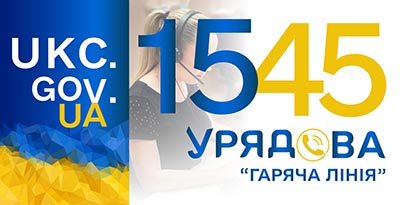In the space of the exhibition "Ukraine - Crucifixion," a discussion on "Historical Memory of Crimean Tatars in Stories of Deportation" and a presentation of the photo project "My Homeland in the Portrait of My Ancestors" were held. The events were timed to coincide with the 80th anniversary of the Soviet deportation of Crimean Tatars.
The meeting was attended by Refat Chubarov, Chairman of the Mejlis of the Crimean Tatar people; Martin Oleksandr Kyslyy, a researcher of the history of the Crimean Tatars (National University of Kyiv-Mohyla Academy); Yurii (Amir) Radchenko, director of the Centre for Interethnic Relations Research in Eastern Europe. Roman Kabachiy, acting head of the Department of Combat Operations of the World Wars of the Twentieth Century at the War Museum, was a moderator of this session.
During the conversation, the topic of preserving the identity of the Crimean Tatars in the context of the genocidal act of deportation was raised as a key factor in the formation of unity and civic resilience among the people. (During the deportation and in the first years after it, the Crimean Tatar people lost 46% of their representatives. Three sub-ethnic groups of Crimean Tatars were expelled from Crimea: coastal, mountainous, and steppe (Noğays); they returned home as a united nation).
Refat Chubarov emphasized the need to punish evil, mainly because those who intruded into Tatar homes and settlements failed to comprehend and still fail to grasp the severity of deportation as a crime. "All those who arrived in Crimea after February 27, 2014, approximately one million people, must depart," stated the Mejlis leader. He also pointed out the inadequacy of the decolonization law, which only allows partial reproduction of the historical place names of a region like Crimea.
Martin Oleksandr Kyslyy spoke about ways to preserve the Crimean Tatar language, culture, and identity in exile, about the mishaps of passing on and not passing on family stories of deportation, and about the formation of specific mythical ideas about the deportation by generations of Crimean Tatars born outside Crimea.
Yurii (Amir) Radchenko explained how the Crimean people’s collective tragedies were perceived by their neighbors. Roman Kabachiy presented books on Crimean Tatar themes and dolls in national costumes that the teacher-scholar Adile Bekirova had left with a Kyiv family when she returned to occupied Crimea.
Svitlana Datsenko, head of the Department of Socio-Humanitarian Components of the War Museum, presented the photo project "My Homeland in the Portrait of My Ancestors." She spoke about the idea that emerged in the War Museum to showcase the family continuity of generations of Crimean Tatars, which has persisted despite repression and deportation. The project combines old family photographs with modern photos of nine successful Crimean Tatars. These are Tamila Taşeva, the Permanent Representative of the President of Ukraine in the Autonomous Republic of Crimea; Alim Aliev, Deputy Director of the Ukrainian Institute; Yusuf Kurkchi, Secretary of the Embassy of Ukraine in the Republic of Uzbekistan, and Sevgil Musayeva, Editor-in-Chief of the Ukrainska Pravda, actor, and director Ahtem Seitablayev, film director Nariman Aliyev, Deputy Head of the Genichesk District State Administration, member of the Mejlis Gulnara Bekirova, photographer Emine Ziyatdinova, and ceramic artist Rustem Skybin.
Svitlana Datsenko mentioned that the oldest photo shown is a 1913 photograph of Emine Ziyatdinova’s great-grandfather Emir Veli Abdul-Kerim (born in 1886) with his sisters and son Shaib. The great-grandfather was persecuted and executed in 1938 for "anti-Soviet activities." Emine Ziyatdinova, who joined the presentation online, shared her experience searching for family photos. She also presented a picture of Shaib, her grandmother’s brother, in a Red Army uniform from 1941 and emphasized that he never returned from the war.
The War Museum photographer Roman Pupenko took the most recent photo on May 3, 2024. It shows Gulnara Bekirova visiting her mother, Ruziya Alidinova, in the hospital. Gulnara khanum is frequently in Istanbul, where her husband, Edem Bekirov, a political prisoner of the Kremlin, is undergoing treatment. She came to Ukraine for a few days to visit her mother. The presentation of the photo project was attended by Ms. Gulnara’s granddaughter, Rosalie, who shared the family’s experience of escaping the occupied village of Novooleksiyivka in the Kherson region. Rosalie also presented family relics donated to the photo project: a prayer book and a marama shawl belonging to Ruziya Alidinova. The shawl was embroidered for Ruziya by her mother, Fatima Muzhdabaeva, on her 17th birthday in deportation in Uzbekistan. The prayer book was written down by her mother by hand from the prayers she knew by heart.
The event was organized in collaboration with the Mejlis of the Crimean Tatar people, the Centre for Interethnic Relations Research in Eastern Europe, and the Permanent Mission of the President of Ukraine in the Autonomous Republic of Crimea. The Museum is thankful for their support in preparing the annotation of the photo project and captions in the Crimean Tatar language.











